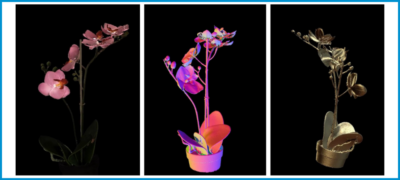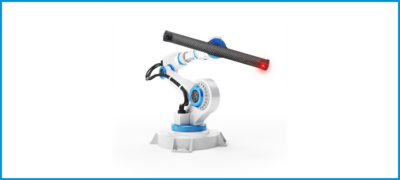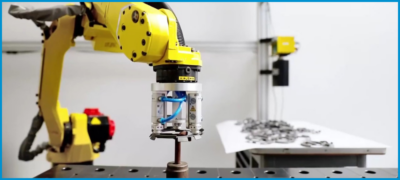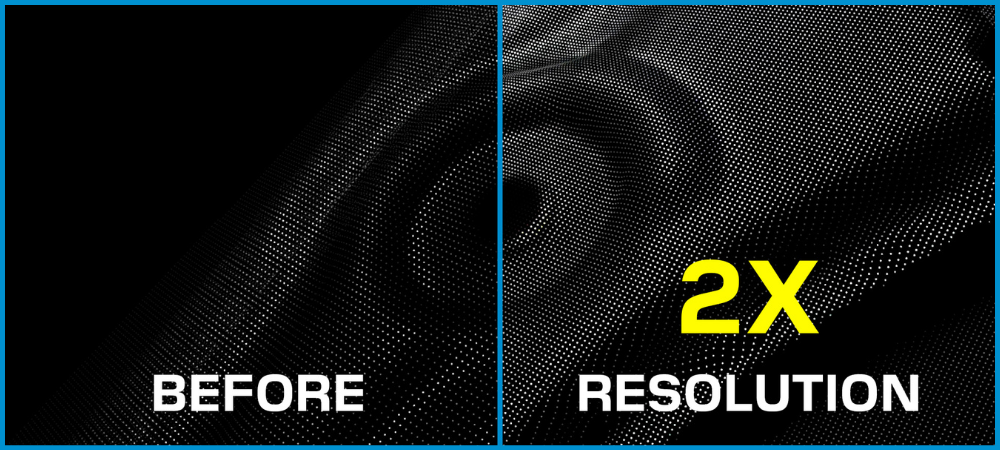
How super-fast 2 Mpix 3D scanning in motion improves automation
Enhanced MotionCam-3D:
Scanning in motion now at 2 Mpix resolution!
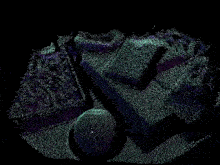
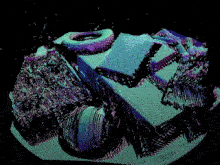

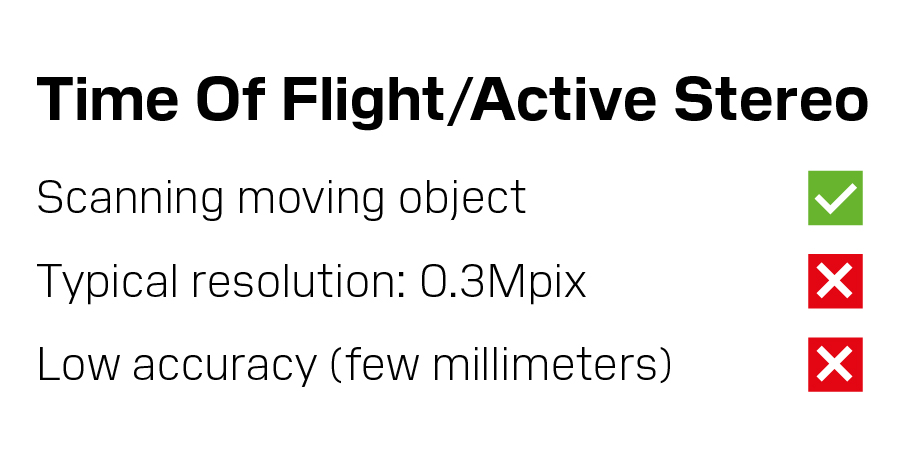
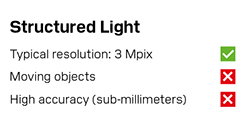
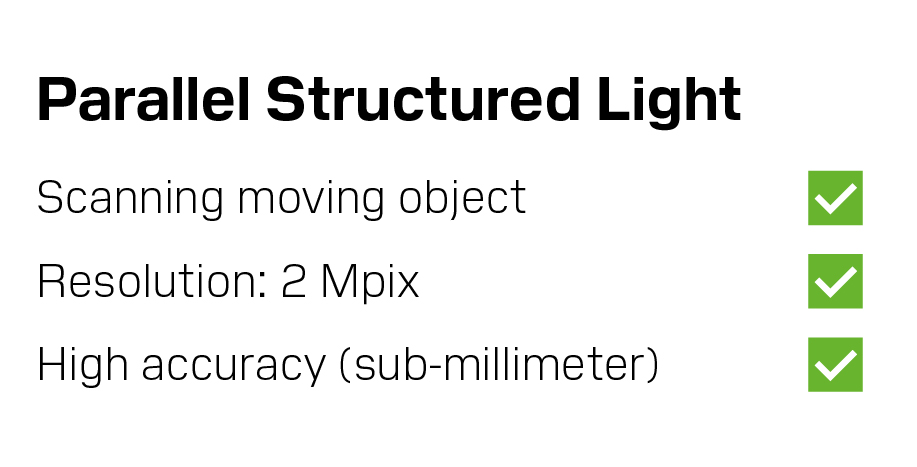
WHY DOES THIS MATTER FOR AUTOMATION?
✓ Faster bin pickings
Lower cycle times, less errors, faster error recovery
✓ 3D picking from conveyors
Resistance to vibrations & non-linear movement
✓ Minimized stopping in hand-eye setups
No slow-downs to take scans, no effect of vibrations
✓ Vibration-free 3D inspection in motion
Unique technology enabling precise inspection with resistance to vibrations and random movement
Speed and accuracy can spell the difference between the success and failure of an automation application.
While conventional 3D scanners can “walk” fast, requiring a pause after each step to provide accurate 3D output, MotionCam-3D is the only 3D camera that can “run” without stopping and provide high-resolution 3D data at the same time.
Now we bring it all one level further by introducing another huge advancement – the 2 Mpix 3D scanning in motion with our enhanced MotionCam-3D.
Explore the capabilities of MotionCam-3D
Dynamic 3D vision applications
2 Mpix resolution 3D scanning in motion has been a tough challenge to master. Popular technologies such as Time-of-Flight or Active Stereo can provide fast scanning speed but their resolution is often VGA (Video Graphics Array = a resolution standard for displaying graphics on monitors) and their accuracy can only achieve several millimeters. None of the two technologies can provide nice details on edges and the whole 3D output is rather noisy.
MotionCam-3D has been the only area-scan 3D camera able to capture dynamic scenes in high resolution and accuracy. Yet, we managed to push its performance even further to increase its resolution from 0,9 Mpix to 2 Mpix.
The ability to 3D scan in motion in full resolution brings significant improvement to many industrial applications.These can be divided into two major categories:
- Inspection and quality control
- Vision-guided robotics
Let’s have a look at these applications in more detail below.
Inspection and quality control
Industrial inspection of moving objects is traditionally performed by 3D laser line profile sensors, which are mainly used for scanning smaller objects. Saying that these devices can work in motion is not perfectly accurate as they actually require movement.
The movement needs to be linear, homogenous, and predictable for profilometers to provide high accuracy. Vibrations or random motion of larger objects with rounded areas pose a big challenge.
In contrast, high-quality area 3D scanners work traditionally only on static scenes so they are either not applicable at all for inspection in motion or they can provide a very limited throughput in the best case.
Motioncam-3D now achieves a resolution level that makes it practical for a wide range of inspection tasks even if the inspected object moves randomly or vibrates on a conveyor.
The 2 Mpix resolution is available in all 5 models to ensure that the camera can be used for any object size or application.
For instance, the L model of MotionCam-3D provides a scanning range of 778 – 3034 mm so it is suitable for scanning large objects such as metal sheets or b-pillars. The 2 Mpix resolution enables you to inspect even small features inside the sheets, such as holes or cuts, to inspect if they have been cut correctly.
Traditionally, several cameras needed to be installed in a close distance to the inspected object but with MotionCam-3D, you only need one single device.
The S model of MotionCam-3D, providing a scanning range of 366-558 mm, is perfect for scanning small details. If you need to scan welded objects in motion and inspect the quality and precision of the welds, the S model is the right choice for this type of application. The high density of point clouds allows you to precisely evaluate the shape of the welds.
Vision-guided robotics
Another large application area that relies on full-resolution 3D scanning in motion is robot navigation for object picking. Here, you can deal with two different scenarios – either the object moves on a conveyor belt or the object is still but something in the background (in the view field of the camera) moves.
While both scenarios are challenging for traditional cameras, MotionCam-3D specializes in these exact types of applications. The 2 Mpix resolution in motion provides great flexibility, allowing you to tailor the camera’s capabilities to your specific application needs.
Bin picking
Bin picking is one of the biggest application fields for 3D cameras that relies on full-resolution and high-density 3D point cloud for accurate robot navigation.
The unparalleled performance of MotionCam-3D brings you super fast bin picking compared to standard 3D vision technologies. The fast scanning speed of MotionCam-3D ensures low latency, which leads to better throughput and faster error recovery. This improvement is especially important in AI and logistics applications.
The dynamic mode of MotionCam-3D ensures that even if the robot interferes with the camera’s field of view or if there is a movement in the bin environment, the point cloud will be unaffected and without noise. The 2 Mpix resolution increases the accuracy of your bin picking application, allowing you to pick even very small or complex parts.
A special case is hand-eye bin picking, where a 3D camera is mounted directly onto the robotic arm. This setup provides a number of advantages over extrinsic calibration – from the possibility to scan a larger bin with a smaller camera, scanning two bins with one single camera, to the ability to “look” at the scene from any angle and position.
The limitation of traditional 3D scanners in hand-eye bin picking is that they are not suitable for time-critical applications as the robot needs to stay still during scan acquisition. MotionCam-3D removes this limitation as it can scan the scene without requiring the robot to stop.
Picking of moving objects
Sometimes, your application may require object picking and placing with precise orientation, relying on certain features such as holes in the objects. In such cases, resolution and accuracy of the 3D camera play a crucial role. The 2 Mpix resolution allows you to identify small features in motion much easier.
In the video below, the picking of objects on a conveyor belt is done with MotionCam-3D and Photoneo software Locator Studio.
We are constantly pushing the boundaries of the possible, having brought to you 3D area scanning in motion, ambient light suppression, scanning from large distances, dealing with black and glossy materials, and quite recently also 3D scanning of transparent objects. The above-described applications are just a fraction of your vast possibilities with MotionCam-3D.
Are you not sure about the feasibility of your project? Contact us and tell us about your use case.

